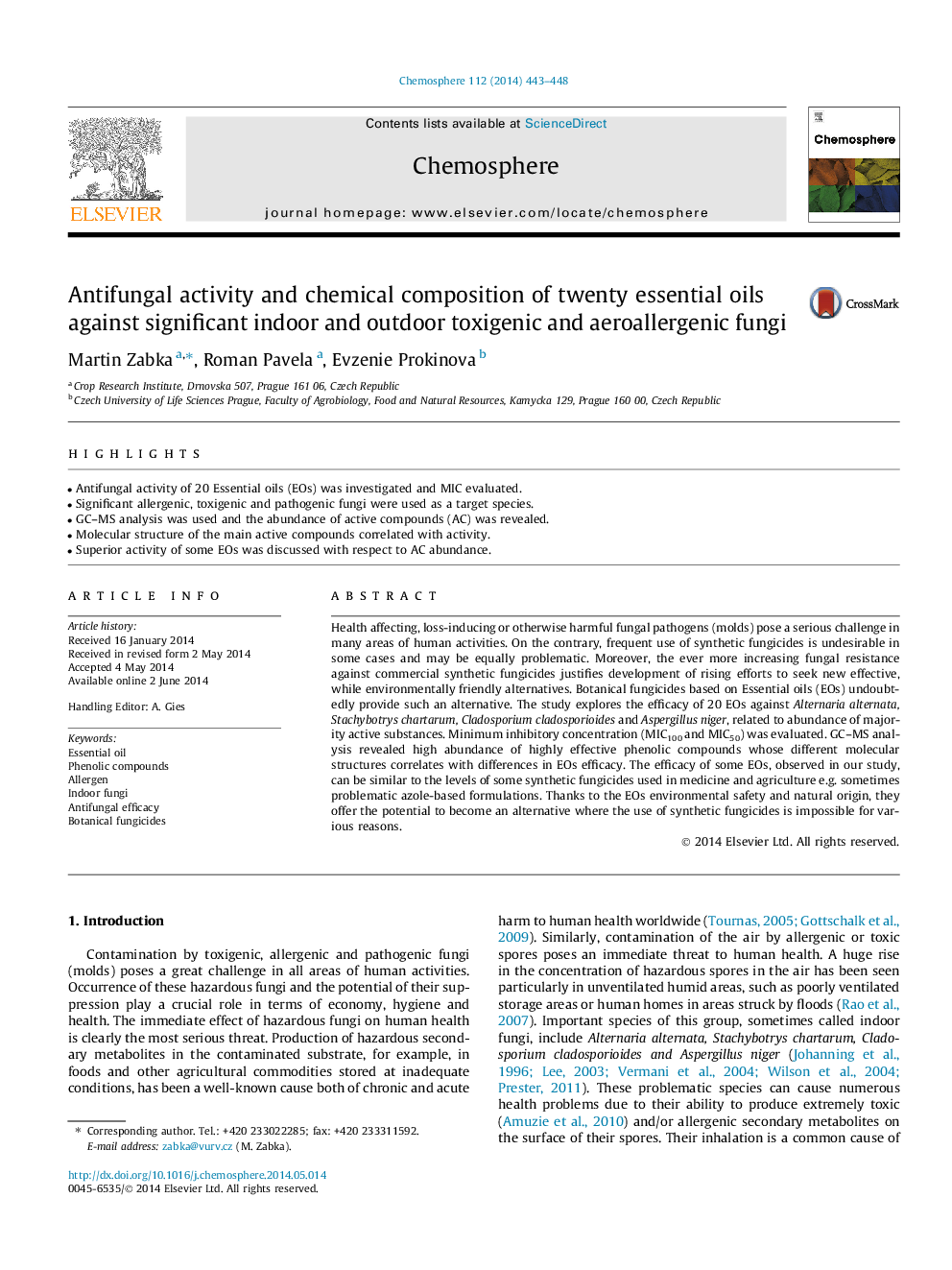| Article ID | Journal | Published Year | Pages | File Type |
|---|---|---|---|---|
| 6308872 | Chemosphere | 2014 | 6 Pages |
â¢Antifungal activity of 20 Essential oils (EOs) was investigated and MIC evaluated.â¢Significant allergenic, toxigenic and pathogenic fungi were used as a target species.â¢GC-MS analysis was used and the abundance of active compounds (AC) was revealed.â¢Molecular structure of the main active compounds correlated with activity.â¢Superior activity of some EOs was discussed with respect to AC abundance.
Health affecting, loss-inducing or otherwise harmful fungal pathogens (molds) pose a serious challenge in many areas of human activities. On the contrary, frequent use of synthetic fungicides is undesirable in some cases and may be equally problematic. Moreover, the ever more increasing fungal resistance against commercial synthetic fungicides justifies development of rising efforts to seek new effective, while environmentally friendly alternatives. Botanical fungicides based on Essential oils (EOs) undoubtedly provide such an alternative. The study explores the efficacy of 20 EOs against Alternaria alternata, Stachybotrys chartarum, Cladosporium cladosporioides and Aspergillus niger, related to abundance of majority active substances. Minimum inhibitory concentration (MIC100 and MIC50) was evaluated. GC-MS analysis revealed high abundance of highly effective phenolic compounds whose different molecular structures correlates with differences in EOs efficacy. The efficacy of some EOs, observed in our study, can be similar to the levels of some synthetic fungicides used in medicine and agriculture e.g. sometimes problematic azole-based formulations. Thanks to the EOs environmental safety and natural origin, they offer the potential to become an alternative where the use of synthetic fungicides is impossible for various reasons.
